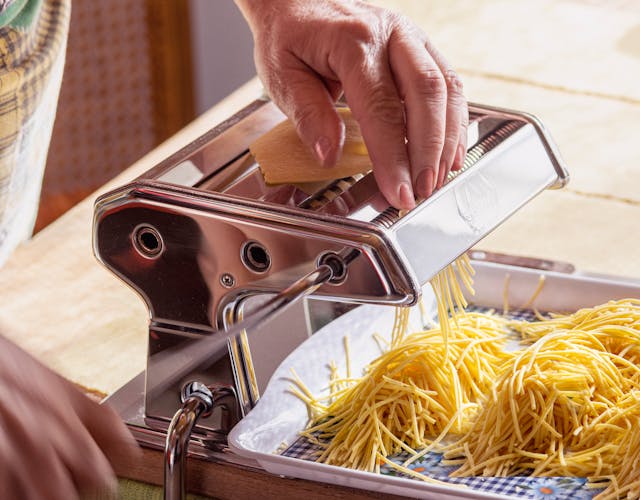Introduction
Tortellini, an iconic pasta shape filled with delectable combinations of meat, cheese, or vegetables, holds a special place in the hearts of many food enthusiasts, especially in Italy. A significant invention that has advanced the craft of making tortellini is the tortellinatrice—a specialized machine that automates the process of producing these beloved pasta pieces. In this article, we will explore the intricacies of the tortellinatrice, how it enhances the pasta-making process, and its role in both artisanal and large-scale production.
1. The Importance of Tortellini in Italian Cuisine
Tortellini originated from the Bologna region of Italy and embody rich culinary traditions. Traditionally, tortellini are filled with a mixture of pork loin, prosciutto, and Parmigiano-Reggiano cheese, although various regional adaptations exist.
Key points highlighting the significance of tortellini are:
1. Cultural Heritage: Tortellini are central to festive occasions, especially during Christmas, where they are often served in broth.
2. Symbol of Artisanal Craft: The meticulous hand-making of tortellini is seen as a culinary art, passed down through generations.
3. Modern Adaptations: Chefs are exploring innovative fillings and pasta techniques, expanding the tortellini’s reputation beyond its traditional roots.
With these elements in mind, the introduction of the tortellinatrice revolutionizes how this treasured dish can be prepared, preserving tradition while embracing efficiency.
2. What is a Tortellinatrice?
The tortellinatrice is a commercial-grade machine specifically designed to create tortellini quickly and efficiently. Its development stems from the necessity to balance the demand for fresh pasta in restaurants and grocery outlets while maintaining quality.
Some of the features of the tortellinatrice include:
- Automated Filling and Folding: The machine can fill and fold pasta sheets precisely to create consistent tortellini shapes.
- Speed and Efficiency: Capable of producing hundreds of tortellini per minute, it significantly reduces preparation time.
- Adjustable Settings: Operators can modify the thickness of the pasta and the size of the filling, allowing for customisation based on preferences.
These attributes make the tortellinatrice an invaluable tool for both chefs and food manufacturers who wish to uphold the essence of traditional tortellini-making while meeting modern-day production demands.
3. The Process of Using a Tortellinatrice
Using a tortellinatrice streamlines the production of tortellini, making it more accessible for both small businesses and larger culinary operations. Here’s a simplified overview of the process:
- Prepare the Dough: The dough is made from flour and eggs, kneaded until smooth, and rested to achieve the right texture.
- Roll the Dough: The dough is rolled out to the desired thickness, ideally around 1-2 mm, using the machine’s rolling attachment.
- Fill the Dough: The tortellinatrice automatically places the filling onto the pasta at uniform intervals, ensuring each piece has the perfect amount of stuffing.
- Fold and Shape: The machine folds the pasta over the filling and shapes it into the traditional tortellini form, which can be adjusted as needed.
- Cook or Chill: The tortellini can be cooked immediately in boiling water or chilled and stored for later use.
The efficiency of this machine enhances the production quality without sacrificing the authenticity of the product, a crucial consideration in artisan pasta making.
4. Advantages of Using a Tortellinatrice
The implementation of a tortellinatrice offers several advantages over traditional hand-making methods, particularly for businesses looking to scale up production.
- Consistency: Each tortellini produced is uniform in size and shape, ensuring a consistent presentation to customers.
- Time-Saving: Reduces labor costs and time spent on expansive pasta production, allowing chefs to focus on other aspects of meal preparation.
- Quality Control: The machine facilitates better quality control by producing less waste and allowing for a more standardized filling process.
As a result, businesses that invest in a tortellinatrice can improve their efficiency and overall output while maintaining high culinary standards.
Conclusion
The tortellinatrice represents a remarkable synthesis of tradition and innovation in the world of pasta-making. By automating the creation of tortellini, this machine not only preserves the craftsmanship that characterizes Italian cuisine but also enables modern chefs and manufacturers to meet the growing demands for authentic, high-quality pasta. As we continue to appreciate and explore the depths of Italian culinary heritage, the tortellinatrice stands as a testament to how technology can enhance, rather than detract from, our culinary traditions. Ultimately, it invites us to savor the beauty of tortellini in its many forms, whether enjoyed in a quaint trattoria or a bustling restaurant.

